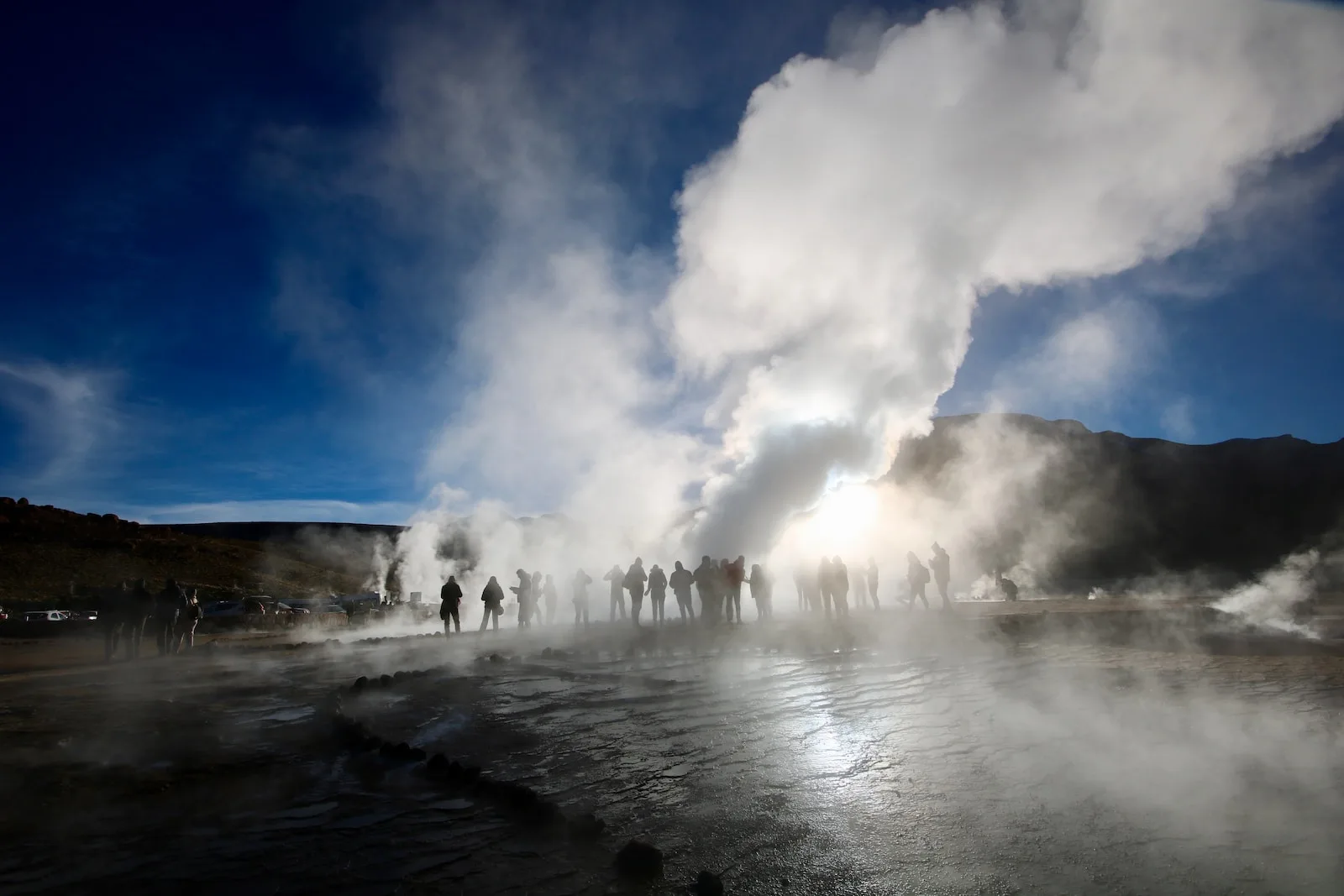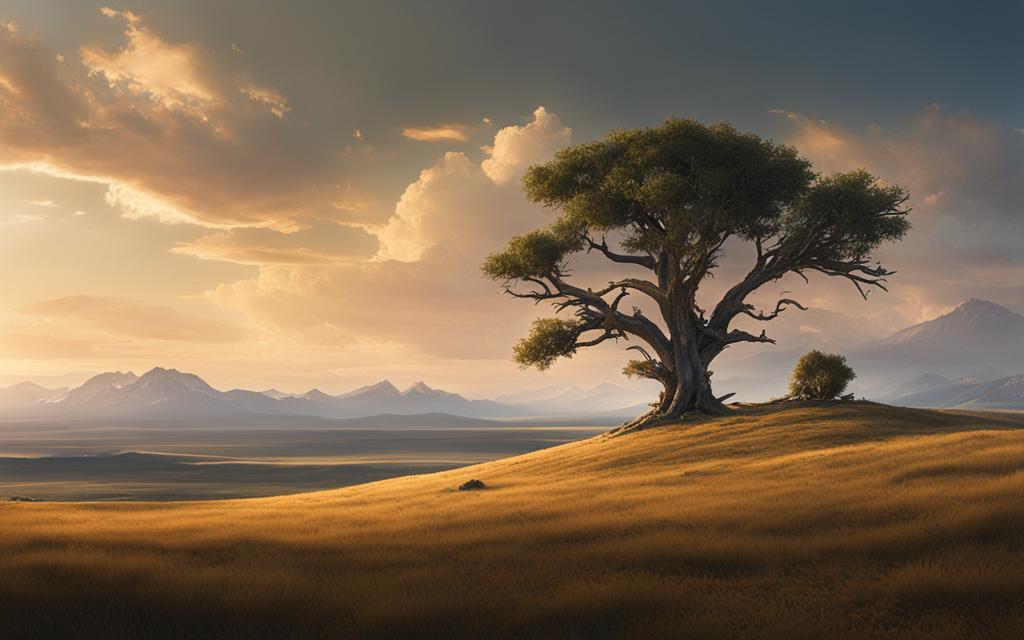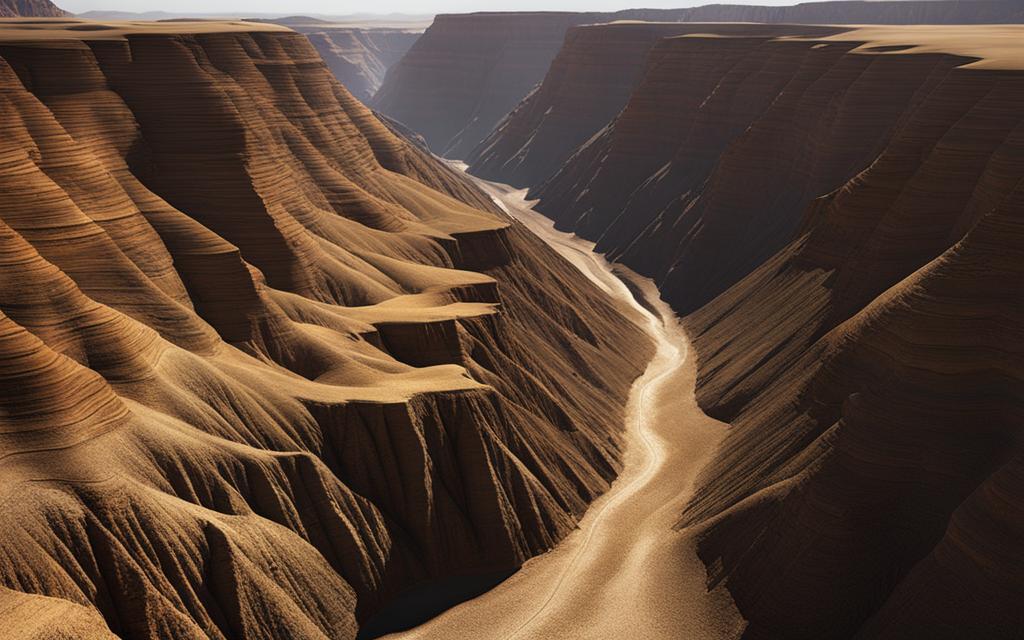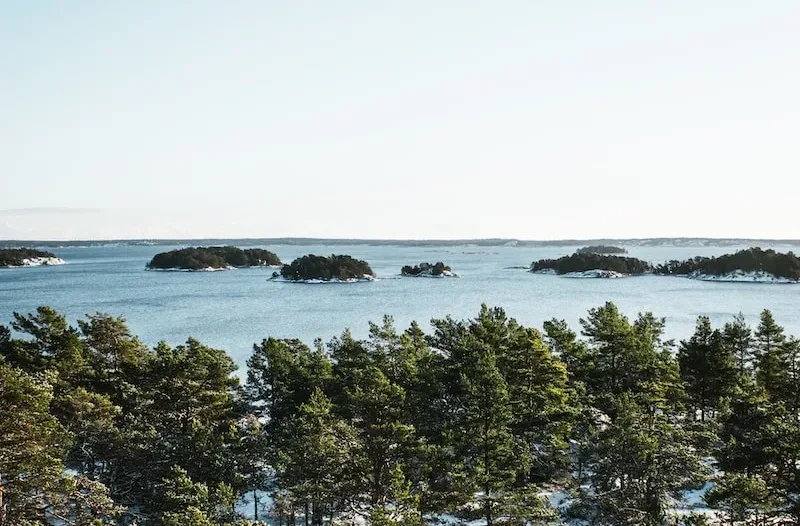Unraveling the Mystery of Geysers and Hot Springs
The world is awash with natural wonders, each with their unique charm that astounds us. Among these natural beauties, two geothermal phenomena that have sparked curiosity are geysers and hot springs.
From the grandeur of Yellowstone’s Old Faithful geyser in the United States to the serenity of Iceland’s Blue Lagoon hot spring, these remarkable features offer more than just a breathtaking view—they reveal intricate processes occurring beneath our feet. Geysers and hot springs both provide a fascinating glimpse into subterranean heat dynamics.
Both are products of geothermal energy, formed when groundwater comes into contact with rock heated by the earth’s mantle. They epitomize nature’s uncanny ability to create awe-inspiring spectacles from simple elements—water, heat and geological formations.
The Crucial Distinction: Beyond Just Hot Water
Understanding the difference between geysers and hot springs is not merely an exercise in geological trivia. It helps deepen our comprehension about how Earth functions as a system—how various components interact with each other to produce diverse yet interconnected phenomena. Delving into this understanding can help us appreciate why certain regions abound with these features while others do not.
It assists in predicting potential changes to these features due to shifts in climate or tectonic activity—a critical knowledge area given our changing climate conditions. Therefore, exploring the distinction between geysers and hot springs provides more than just an interesting read—it equips us better to comprehend, protect, and sustainably use our planet’s invaluable resources.
The Basics: What are Geysers?
Unraveling the Mysteries of Geysers
Geysers are nature’s own water fountains, albeit much hotter than your typical urban fountain. They’re a type of hot spring that periodically erupts, spewing a column of hot water and steam high into the air. The term ‘geyser’ comes from the Icelandic word ‘geysa’, which aptly means ‘to gush’.
The fascinating thing about geysers is their unpredictability, with eruptions varying from minutes to hours, or even days apart. This capricious behavior adds to their allure and mystery, making them an intriguing subject for those interested in natural phenomena.
Genesis of Geysers: A Simple Explanation
The formation of geysers involves an intricate interplay between heat, pressure and water. It starts deep underground where magma heats up rocks surrounding an underground chamber filled with groundwater.
As the water absorbs this heat, it begins to rise through fractures in Earth’s crust- a process known as convection. However, if there is a narrow vent at the top that traps the rising heated water underground, pressure begins to build up over time.
Eventually, this pressure becomes so intense that it sends a breathtaking explosion of superheated water and steam shooting into the sky – voila! A geyser is born.
Famous Geysers Around The World
Eruptive Elegance: Notable Geysers Globally
When considering illustrious examples of geysers worldwide, Old Faithful in Yellowstone National Park in Wyoming undeniably tops the list. Its frequent and somewhat predictable eruptions have been a marvel for visitors since its discovery in 1870.
Another notable geyser is Iceland’s Great Geysir – thought to be one of the oldest known geysers and giving us our English word ‘geyser’. Though its activity has decreased over centuries due its vent becoming blocked by silica deposits.
New Zealand’s North Island also boasts an impressive collection within Te Whakarewarewa Thermal Valley where Pohutu Geyser – meaning “big splash” or “explosion” – frequently shows off with spectacular eruptions reaching heights up to 30 meters. These examples only begin to scratch surface when it comes unveiling world’s astonishing display of geothermal wonders.
The Basics: What are Hot Springs?
Immersing in Warmth: Understanding Hot Springs
Perhaps you’ve come across images of blissful people soaking in steaming water pools amidst snow-capped landscapes. Those delightful retreats are none other than hot springs! Hot springs, as their name suggests, are springs that are naturally heated by the geothermal heat from Earth’s interior.
They often occur in regions with active or past volcanic activity. Unlike their explosive relatives – the geysers – hot springs do not erupt intermittently but rather flow consistently.
They offer a serene environment one can immerse oneself into, for both relaxation and therapeutic benefits. The temperature of these springs typically remains between 37°C (98.6°F) to 70°C (158°F), although there are also “super-heated” hot springs that exceed 100°C (212°F).
The Genesis of Warm Cascades: Formation of Hot Springs
So how exactly do these natural spas form? The formation process is not as complex as it might seem. When water seeps or flows down to the deeper layers of the earth’s crust and comes into contact with heated rocks, it absorbs this heat before rising back up to the surface along faults and cracks.
It’s important to note that this process isn’t instantaneous; it takes time for rainwater or meltwater from snow or ice to traverse down through permeable rock layers and reach those fiery depths where they’re warmed up significantly. This warm water then rises back up through weak spots in the Earth’s crust, resulting in hot spring formations.
World-Class Warm Waters: Famous Hot Springs Across The Globe
There’s a myriad of renowned hot springs spread across our planet each boasting its unique charm! Japan is famous for its ‘onsen,’ naturally occurring hot spring baths rich in minerals known for providing health benefits. Beppu City alone hosts more than 2,000 onsens!
Iceland’s Blue Lagoon is another world-famous example that has become synonymous with relaxation amidst nature’s splendor; its waters reach temperatures around 37-39°C (98-102°F), perfect for unwinding. In America, Yellowstone National Park beautifies itself with Grand Prismatic Spring – one of the biggest and certainly most colorful thermal spring renowned globally for its stunning rainbow-like hues produced by microbial mats around its edges.
Comparing Geysers and Hot Springs: A Journey Through Earth’s Thermal Wonders
The Shared Essence of Geysers and Hot Springs
Despite their contrasting performances, geysers and hot springs are siblings under the skin, born of the same geothermal ancestry. They both owe their existence to the heat buried within Mother Earth’s heart.
This subterranean warmth heats up groundwater that has seeped deep into the earth, creating a natural hot tub or a spectacular water fountain. Both geysers and hot springs are also home to extraordinarily robust microorganisms called thermophiles that thrive in high-temperature environments.
These microscopic inhabitants contribute considerably to the vibrant color palettes often associated with these thermal features. It’s quite remarkable how life can adapt to such extreme conditions, but perhaps even more fascinating is how these seemingly harsh environments can host such biodiversity.
Distinguishing Between Nature’s Water Show:
While they share similar origins, it is their differences that truly distinguish a geyser from a hot spring. At their core, these differences arise from geological structure variations at depth beneath each feature. Geysers are like nature’s pressure cooker: when underground water encounters intense heat far beneath the surface, it becomes superheated.
The unique cave-like plumbing system of a geyser traps this rising superheated water causing pressure to build until it eventually finds release in an astonishing eruption of steam and boiling water. Hot springs on the other hand, lack pressure-tight seals in their plumbing systems allowing heated water to circulate freely to the surface where it collects in pools.
Their tranquility contrasts sharply with geysers’ dramatic displays – but they exude an allure all their own through iridescent colors thanks to mineral deposits and those aforementioned heat-loving microorganisms. Ultimately though different in spectacle – from sudden eruptions of steamy fountains to serene pools of warm mineral-rich waters – both geysers and hot springs mesmerize us with nature’s incredible way of showcasing its thermal energy.
The Intricate Science Behind Geysers
Unearthing the Mechanics of Geysers: An Exploration of Pressure Dynamics and Heat Sources
In understanding the mechanics behind a geyser’s function, it’s crucial to first grasp the notion of pressure dynamics. Essentially, geysers are Mother Nature’s pressure cooker.
Rainwater or melting snow seeps into the ground where it is heated by molten rock located miles beneath the Earth’s surface. As this water heats, steam is generated which increases pressure within the underground chambers.
Under certain conditions, namely a narrow vent or constricted pipe to the surface where cooler temperatures prevail, this effectively traps steam and intensifies pressure further. Eventually, when the subterranean water reaches its boiling point and exceeds static groundwater pressure above it – voila!
A geyser erupts! The subsequent gush of steamy water can reach staggering heights depending on various factors such as volume of water beneath and constriction degree within conduit.
The Unseen Wonders Within Hot Springs
A Journey Beneath Ground Level: Discovering Groundwater Flow and Mineral Content in Hot Springs
Hot springs operate under similar principles as geysers but exhibit less dramatic demonstrations due to differences in their plumbing systems. They form when rainwater descends deep into Earth’s mantle getting warmed by geothermal heat before percolating back up through cracks in bedrock.
This circulatory motion is what we term ‘groundwater flow’, an ebb-and-flow that maintains a steady stream of hot water at surface level. In contrast to geysers’ turbulent display, hot springs offer peaceful sanctuaries with gentle murmurs bubbling forth from their depths.
Yet despite their serene facade, they are potent purveyors of valuable minerals like sulfur, calcium, lithium among others; leached out from rocks during their subterranean journey. These mineral-rich waters are touted for their therapeutic properties – often sought after in balneotherapy or spa treatments due to potential curative effects on skin diseases and musculoskeletal conditions.
Guardians of Unique Ecosystems: Geysers and Hot Springs
More than mere geological curiosities, geysers and hot springs play a quintessential role in sustaining unique ecosystems around them. These thermal features nurture specialized microorganisms known as thermophiles, which thrive in extreme heat conditions that would be inhospitable to most life forms.
Found nowhere else on the planet, these thermophiles are not just biologically interesting; they hold enormous potential for industrial applications, including DNA sequencing and pharmaceuticals. Furthermore, the nutrient-rich runoff from these thermal features supports greater biodiversity in the surrounding area.
In Yellowstone National Park, for example, wetlands created by geyser and hot spring runoff host an impressive array of wildlife such as elk, bison, and a myriad bird species all year around. Therefore, geysers and hot springs serve as ecological oases in otherwise harsh environments.
Climate Directors: The Climate Impact of Geysers & Hot Springs
Beyond their immediate vicinity, geysers and hot springs impact wider climate conditions too. They continually release water vapor into the atmosphere through evaporation which contributes to local humidity levels.
This atmospheric moisture can alter local weather patterns by creating microclimates – localized atmospheric zones with different weather patterns than those typical for a region. In addition to influencing humidity levels locally, these thermal features have been found to emit substantial amounts of carbon dioxide (CO2) and other greenhouse gases which contribute to global warming over extended periods of time.
However intriguingly enough this CO2 emission is part of Earth’s natural carbon cycle – an aspect that underscores how interconnected our planet’s various systems truly are. So while geysers and hot springs impact local climates directly through humidity alteration they also have indirect but significant global impacts via greenhouse gas emissions.
The Cultural Significance of Geysers & Hot Springs
Immersed in Tradition: The Historical Use of Geysers and Hot Springs
From time immemorial, the allure of geysers and hot springs has been woven into the fabric of many cultures. In Japan, for example, ‘onsen’, or hot spring bathing, is a centuries-old tradition rooted in Shinto practices. These naturally heated pools were seen as sacred places where people could cleanse themselves physically and spiritually.
The Maori in New Zealand have a rich history with the geothermal features, using them not just for their therapeutic properties but also for cooking—a practice known as “hangi.” In North America, Native American tribes revered these geothermal wonders as spiritual entities.
For instance, the Blackfeet tribe considered Morning Star Geyser a manifestation of the morning star’s power. Many indigenous groups viewed these sites as sanctuaries for healing and used their mineral-rich waters for therapeutic purposes long before modern science confirmed their health benefits.
Steaming Attractions: The Modern Role of Geysers and Hot Springs
Fast forward to today; geysers and hot springs have evolved from sacred sites to lucrative tourist destinations—public spaces that offer relaxation and recreation while also serving as reminders of our planet’s dynamic nature. The famed Yellowstone National Park is home to over half the world’s geysers—and they undoubtedly constitute a significant part of its charm to over four million annual visitors. Similarly, Iceland uses its famous geyser Strokkur not just as an impressive tourist spectacle but also symbolically represents Icelandic identity—being resilient under pressure.
Hot springs worldwide—from Turkey’s Pamukkale to Costa Rica’s Tabacón—have turned into spa resorts attracting multitudes seeking their curative waters’ purported benefits or merely basking in their warm embrace amidst stunning natural landscapes. So whether for historical reverence or modern leisure purposes, it’s evident that our connection with these extraordinary geothermal features remains unfaltering—testifying to both our cultural evolution and enduring respect for Mother Nature’s majesty.
Unraveling the Ecological Marvels of Geysers and Hot Springs
Geysers and hot springs, the epitome of geothermal majesty, hold significant ecological importance. These hydrothermal features provide a unique platform for life forms that thrive in extreme conditions. Certain thermophilic bacteria and algae found in these environments cannot survive anywhere else on Earth.
These microscopic life forms form vibrant, colorful mats around hot springs, adding to their mystical allure. Apart from being nature’s lab for studying extremophiles, these phenomena also influence local climate conditions.
They act as natural humidifiers, releasing water vapor into the atmosphere which can affect weather patterns locally. This moisture combined with geothermal heat creates a microclimate where certain plants can flourish despite frigid ambient temperatures.
Capturing Cultural Significance: More Than Just Natural Phenomena
It is not just their ecological wonderment that makes geysers and hot springs noteworthy; they are interwoven in our cultural fabric as well. For centuries, communities living near these features have revered them as sacred sites, believing them to be a connection between the earthly realm and the underworld. In contemporary times, aside from their aesthetic appeal drawing tourists worldwide, they serve practical purposes too.
Many societies harness their therapeutic properties for balneotherapy or bathing purposes. In some regions like Iceland and New Zealand, they also serve as renewable energy sources powering geothermal power plants.
The Future Beckons: Why Our Fascination Should Continue?
To conclude our geyser-hot spring comparison journey – it’s clear we should continue delving deeper into understanding these natural wonders better because there’s still much more to unfold! The more we understand about these complex systems – from their geological mechanics to their microbial tenants – the closer we get to deciphering other mysteries of life on Earth (and possibly beyond!)
We’re living at a time when sustainable energy solutions are crucial – our understanding of how these hydrothermal features work could open avenues towards harnessing more green energy solutions like geothermal power. So let’s keep exploring these fascinating spectacles nature offers – after all who knows what secrets lie beneath those bursts of steam or within those simmering pools?
…
Our quest to understand geysers and hot springs does not stop here – it is an ongoing journey filled with curiosity and awe towards Mother Nature’s ingenuity. We must take care not just to marvel at them but protect them too so future generations can likewise appreciate their splendor while reaping their benefits both ecologically and culturally – Here’s to celebrating our planet’s dazzling display of geothermal wonders!
 Skip to main content
Skip to main content


